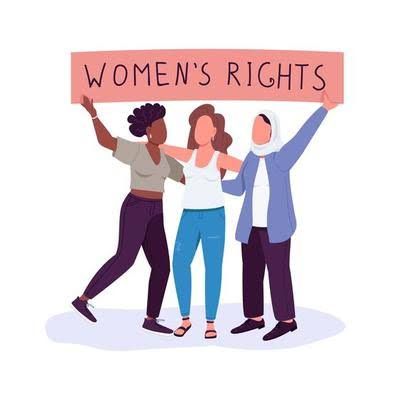LEGAL ARTICLE ON GENDER BASED VIOLENCE

Author- ALANKRITI SINGH, a Student of CHRIST ACADEMY INSTITUE OF LAW
ABSTRACT-
Gender-based violence is a pervasive issue that impacts individuals across the globe, regardless of their age, cultural background, or socioeconomic status. This abstract aims to delve into the various aspects of gender-based violence, including its definition, prevalence, contributing factors, and its far-reaching consequences.
Gender-based violence refers to any form of violence, abuse, or discrimination that specifically targets individuals based on their gender. It encompasses a broad range of acts, including physical, sexual, and psychological violence, perpetrated by both intimate partners and strangers. The victims of gender-based violence are predominantly women and girls, although men and boys can also be affected.
The prevalence of gender-based violence is alarmingly high in many societies. It cuts across all demographic groups and occurs in both developed and developing countries. This violence can take place in various settings, such as homes, workplaces, schools, and public spaces. Furthermore, it can manifest in the forms of domestic violence, sexual assault, harassment, child marriage, female genital mutilation, and sex trafficking, among others.
INTRODUCTION TO THE TOPIC-
Gender-based violence is a deeply entrenched problem that continues to afflict individuals around the world. It refers to any act of violence, abuse, or discrimination directed towards individuals based on their gender, predominantly affecting women and girls. This introductory section will provide an overview of gender-based violence, its various forms, and the significant impact it has on individuals and society as a whole.
Gender-based violence encompasses a broad range of behaviors that seek to exert power and control over individuals based on their gender. It can manifest in different forms, including physical, sexual, and psychological violence. Examples of gender-based violence include domestic violence, sexual assault, harassment, child marriage, female genital mutilation, and sex trafficking, among others. These acts are often characterized by a power imbalance, where perpetrators exploit and oppress individuals based on their gender.
The prevalence of gender-based violence is disconcertingly high across different societies and regions. It affects people from all walks of life, regardless of their age, socioeconomic status, or cultural background. This violence cuts across both developed and developing countries, occurring in various settings such as homes, workplaces, schools, and public spaces.
Numerous factors contribute to the perpetuation of gender-based violence. Deeply ingrained cultural norms and societal expectations play a significant role, perpetuating unequal power dynamics between men and women. Toxic masculinity, rigid gender roles, and harmful stereotypes further contribute to the normalization of violence. Socioeconomic factors such as poverty and lack of education also contribute to the prevalence of gender-based violence.
The consequences of gender-based violence are far-reaching and devastating. Survivors often suffer physical and psychological trauma, experiencing long-term health problems and mental health disorders such as depression and anxiety. Gender-based violence perpetuates cycles of poverty and inequality, hindering social and economic development. It also has implications for families, communities, and society as a whole, creating a climate of fear, distrust, and insecurity.
Addressing gender-based violence requires a comprehensive approach that tackles its root causes and provides support to survivors. It necessitates the implementation and enforcement of laws that protect individuals from violence and hold perpetrators accountable. Education and awareness programs are crucial in challenging societal norms and promoting gender equality. Accessible and comprehensive support services, including counseling, legal aid, and safe shelters, are essential for survivors to heal and rebuild their lives.
LEGAL JARGON RELATED TO THE TOPIC-
Legal jargon related to gender-based violence encompasses a range of terms and concepts that are commonly used in legal frameworks, policies, and discussions addressing this issue. Here are some key legal terms associated with gender-based violence:
1. Domestic Violence: Refers to any form of violence, abuse, or controlling behavior that occurs within a domestic or intimate relationship, including physical, sexual, emotional, or economic abuse.
2. Sexual Assault: The non-consensual sexual contact or penetration of an individual, which may involve force, threats, coercion, or taking advantage of someone’s vulnerability.
3. Harassment: Unwanted behavior, often of a sexual nature, that is offensive, intimidating, or creates a hostile environment, including verbal, physical, or psychological actions that violate a person’s dignity and rights.
4. Gender-Based Discrimination: The unfair and unequal treatment of individuals based on their gender, giving rise to social, economic, or political.
INDIAN CASES DEALING WITH “GENDER BASED VIOLENCE”
There have been several significant Indian legal cases that have dealt with gender-based violence. Here are a few notable examples:
1. Vishaka and Others v. State of Rajasthan (1997): This case led to the landmark judgment by the Supreme Court of India, which recognized sexual harassment at workplaces as a violation of fundamental rights under the Indian Constitution. The court provided guidelines to prevent and address sexual harassment, known as the “Vishaka Guidelines.”
2. State of Maharashtra v. Dr. Praful B. Desai (2003): In this case, the Supreme Court clarified the definition of rape and declared that lack of physical resistance does not imply consent. The judgment emphasized that sexual violence is a serious offense, and consent must be obtained affirmatively.
3. Independent Thought v. Union of India (2017): This case raised the issue of child marriages and sexual relations with a minor spouse. The Supreme Court ruled that marital rape is an offense, and sexual intercourse with a wife below the age of 18 constitutes rape, even if she is married.
4. Navtej Singh Johar & Ors. v. Union of India (2018): This landmark judgment decriminalized consensual same-sex relations by striking down Section 377 of the Indian Penal Code. The court recognized the rights of individuals to engage in consensual sexual relationships irrespective of their gender or sexual orientation.
5. Nirbhaya Gang Rape Case (2012): The brutal gang rape and subsequent death of a young woman in Delhi led to widespread protests and brought attention to the issue of violence against women in India. The case resulted in changes in India’s laws regarding sexual offenses, including the criminalization of stalking, acid attacks, and stricter punishment for rapists.
These cases demonstrate the evolving legal landscape surrounding gender-based violence in India and the efforts made by the judiciary to address such issues.
CONCLUSION-
In conclusion, gender-based violence remains a significant issue in India. However, there have been important legal cases that have brought attention to and sought to address this problem. Landmark judgments, such as Vishaka v. State of Rajasthan and Independent Thought v. Union of India, have provided legal frameworks for combating sexual harassment and child marriages, respectively. The decriminalization of consensual same-sex relationships in Navtej Singh Johar & Ors. v. Union of India has also expanded the rights and protections for the LGBTQ+ community. Additionally, high-profile cases like the Nirbhaya gang rape have spurred public outrage and led to changes in laws surrounding sexual offenses. While there is still much work to be done, these legal cases signal a gradual shift towards a more inclusive and just society, where gender-based violence is increasingly recognized, condemned, and addressed.




